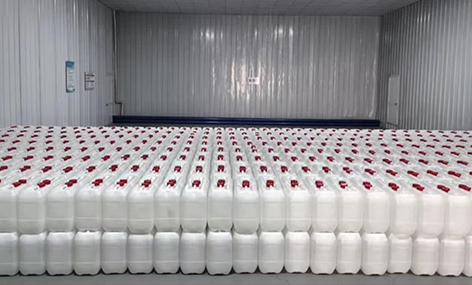
Nov . 10, 2024 08:53 Back to list
Understanding the Distinction Between Glacial Acetic Acid and Regular Acetic Acid
The Difference Between Glacial Acetic Acid and Acetic Acid
Acetic acid is a fundamental organic compound with diverse applications in various industries, ranging from food preservation to the manufacture of chemicals. While many people may use the term acetic acid interchangeably, it's essential to understand the distinction between glacial acetic acid and acetic acid. This article explores these differences, emphasizing their properties, uses, and significance in both industrial and everyday contexts.
What is Acetic Acid?
Acetic acid, chemically denoted as CH₃COOH, is a colorless liquid organic substance with a pungent smell and a sour taste. It is the primary component of vinegar, contributing to about 4-8% of its composition, which is why vinegar has a characteristic tangy flavor. As a weak acid, acetic acid partially ionizes in water, exhibiting a moderate toxicological profile compared to strong acids. It is also naturally produced by fermentation processes, making it integral to various culinary and fermentation practices.
What is Glacial Acetic Acid?
Glacial acetic acid refers to the concentrated form of acetic acid that contains 99-100% acetic acid and is free of significant amounts of water. The term glacial derives from its ability to solidify when cooled below 16.6 degrees Celsius (62 degrees Fahrenheit), forming ice-like crystals that resemble glaciers. This high concentration of acetic acid makes glacial acetic acid a powerful acid and a potent solvent, and it is colorless and highly corrosive.
Key Differences
While both glacial acetic acid and standard acetic acid share the same molecular formula, their physical properties, concentration, and applications set them apart
what is difference between glacial acetic acid and acetic acid

1. Concentration The primary difference lies in the concentration of acetic acid. Glacial acetic acid contains about 99-100% acetic acid, whereas typical acetic acid in vinegar is significantly diluted, ranging from 4-8%. This high concentration makes glacial acetic acid much more caustic and less safe to handle without appropriate precautions.
2. Physical State As mentioned earlier, glacial acetic acid can solidify at cooler temperatures, while diluted acetic acid remains in liquid form at ambient conditions. The solidified form of glacial acetic acid also behaves differently physically and chemically when handled.
3. Reactivity Glacial acetic acid is much more reactive due to its high concentration. It can cause severe burns to skin and tissue upon contact, whereas diluted acetic acid poses a significantly lower risk. This reactivity with strong bases, alcohols, and various oxidizers enhances its utility in industrial processes, such as the production of acetates and other organic compounds.
4. Uses Glacial acetic acid has several industrial applications, including its use as a solvent in chemical reactions, a precursor in the synthesis of various chemicals (like acetic anhydride and acetate esters), and in the production of plastics, textiles, and more. Conversely, diluted acetic acid is commonly utilized in the food industry as a preservative, flavoring agent, and in household cleaning products for its disinfectant properties.
5. Toxicity and Safety The handling of glacial acetic acid requires stringent safety measures, including the use of protective equipment like gloves and goggles, due to its corrosive nature. In contrast, while diluted acetic acid is also an irritant, it is relatively safe for consumer use in food and household contexts.
Conclusion
Understanding the differences between glacial acetic acid and standard acetic acid is crucial for their proper application and handling. Whether utilized in industrial production processes or everyday kitchen practices, recognizing the distinct characteristics of these two forms of acetic acid enhances safety and efficiency. It is essential for users to adhere to appropriate safety guidelines and procedures when dealing with glacial acetic acid, given its concentrated and corrosive nature, whereas acetic acid's widespread availability in food and household products underscores its importance in our daily lives. Both forms of acetic acid play significant roles in diverse fields, underscoring the multifaceted nature of this essential compound.
-
SmartAgri Solutions - Precision Farming&Soil Monitoring
NewsJul.13,2025
-
Industrial Solutions-Example Inc.|Smart Manufacturing&Energy Efficiency
NewsJul.13,2025
-
Food Grade Glacial Acetic Acid-Pure Quality|High-Purity Acetic Acid,Food-Grade Chemical
NewsJul.13,2025
-
Industrial Efficiency Solutions-NextGen Technologies|Advanced Automation&Data-Driven Analytics
NewsJul.12,2025
-
Smart Manufacturing Solutions-Example.com|Enhance Efficiency&Reduce Costs
NewsJul.12,2025
-
Food grade glacial acetic acid
NewsMar.07,2025
